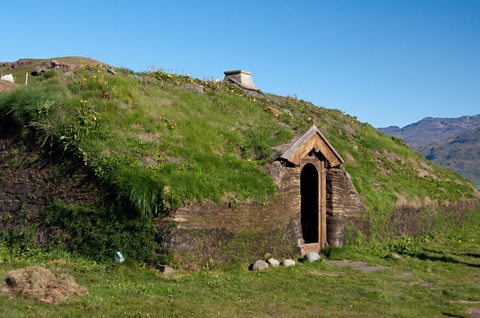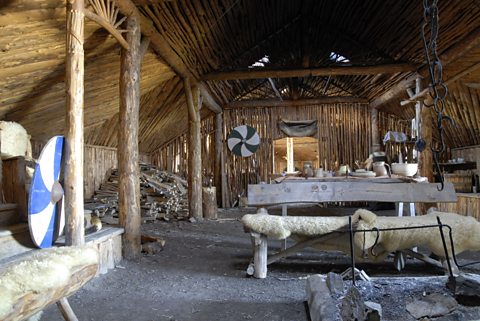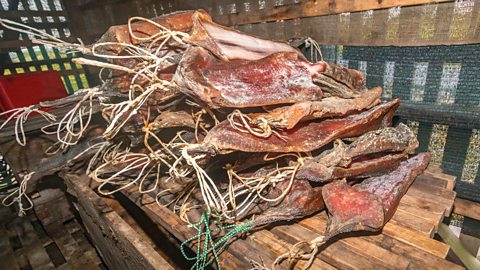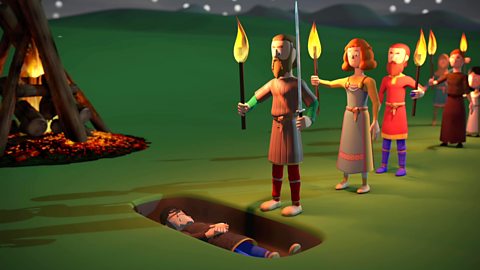When the Vikings arrived in Scotland from Norway, they brought their own way of life with them. So what was life like in a Viking village?
Vikings were very handy around the house, making their own cloth, bread and games too.

What were Viking villages like?
The Vikings and their families mostly lived in small villages that were near the coast.
Despite their reputation as brave warriors and terrifying raiders, the Vikings spent most of their time farming and fishing.
The Vikings grew wheat to make bread and beer, and raised animals such as sheep, pigs and cattle. The seas were very important for Viking life and fishing provided a big part of the Viking diet.
Living near the sea had other benefits. The Vikings were excellent sailors and it was easier for them to travel by boat than by land. This was very important as the Vikings also often had to travel great distances to trade.


What was it like in a Viking home?
In countries like Norway, Viking homes were usually built from wood.
They had thick walls made from wood and mud and the roofs were layered with thick turfs of grass or thatched with branches and reeds.
In Scotland, the houses were often built from stone because there were less trees and wood was harder to come by.
The common name for Viking homes was longhouses as they were rectangular in shape. Most homes would be quite small as only the wealthy could afford big homes.
There were no toilets or running water and in the winter Viking families shared their homes with their animals. They would have been very smelly!


What was life like?
Life in Viking villages was shaped by the seasons and everyone had a role to play making sure there was enough food to eat.
During the summer months, male Vikings would form raiding parties and sail across the sea to raid settlements, or monasteries such as Iona and Lindisfarne to carry off all the gold and treasure they could get their hands on.
While the men were raiding, it was the women and children who looked after the farming.
Crops had to be planted, watered, and harvested, animals had to be looked after before they were killed and butchered, and fish had to be smoked or salted to preserve them so they had food to eat over the winter.
Women and girls would also spin wool into thread and make cloth. It was often the job of children to grind grains to make the flour that they used to bake their bread.
It was a tough life.

Explore a Viking home. Click on the labels to find out more.
More on Vikings
Find out more by working through a topic
- count2 of 9

- count3 of 9

- count4 of 9

- count5 of 9
